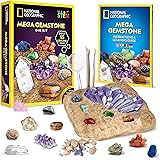Unlocking Miniature Power: Exploring DIY Free Energy Ideas with Zener Diode Solar Panels
Have you ever pondered the fascinating possibility of generating electricity from everyday objects? The video above brilliantly showcases a simple yet effective DIY project: a miniature solar panel constructed from Zener diodes and a compact disc. This exploration into DIY free energy ideas offers a tangible example of how readily available components can be repurposed for low-voltage power generation.
This article aims to expand upon the concepts introduced in the video, delving deeper into the mechanics, potential applications, and the underlying principles that make such homemade energy gadgets feasible. The ingenious use of a CD to enhance light capture, combined with the voltage-generating properties of Zener diodes, demonstrates an accessible entry point into understanding solar energy at a micro-scale.
1. The Ingenuity Behind the Zener Diode Solar Panel
At the heart of this DIY solar panel is the Zener diode. While commonly known for regulating voltage in electronic circuits, these components possess a lesser-known property: they can generate a small amount of voltage when exposed to light. This effect is a rudimentary form of the photovoltaic phenomenon, where photons from sunlight excite electrons within the diode’s semiconductor material, thereby creating an electric current.
Firstly, the video demonstrates connecting 20 Zener diodes in series. This method is crucial because individual Zener diodes generate only a minute amount of voltage. When connected in series, the voltages produced by each diode are added together, resulting in a higher, more usable total output.
Secondly, initial measurements were observed, showing around 150 millivolts being generated by the diodes without any reflective aid. This initial reading establishes a baseline for the diodes’ inherent light-to-electricity conversion capability.
2. Amplifying Output: The Role of the Compact Disc
One of the most innovative aspects of this homemade solar power project is the incorporation of a compact disc (CD). The reflective surface of a CD is cleverly utilized to concentrate ambient sunlight onto the array of Zener diodes. This focused light ensures that more photons strike the active regions of the diodes, leading to an increased generation of electrical energy.
The process involves securely gluing the Zener diodes onto the CD’s reflective side. This strategic placement allows the CD to act as a miniature parabolic reflector, directing a greater intensity of light onto the diodes than they would receive directly. Imagine if a small magnifying glass were used to focus light; the CD performs a similar function but across a wider area, maximizing photon capture.
Following the CD integration, a significant improvement in voltage output was measured. The panel, now enhanced by the CD, was observed to generate 240 millivolts and later 254 millivolts when placed under sunlight. This increase from the baseline 150 millivolts clearly illustrates the effectiveness of using a reflective surface to boost the efficiency of this simple solar cell.
3. Understanding Millivolts and Practical Applications for DIY Energy Gadgets
The voltage generated by this DIY energy gadgets project, while impressive for its simplicity, is measured in millivolts (mV). A millivolt is one-thousandth of a volt, meaning 254 millivolts is 0.254 volts. This amount is quite small when compared to the 1.5 volts produced by a standard AA battery or the 120 volts found in a typical wall outlet.
However, small voltages still have practical applications, especially in the realm of miniature solar panel projects and ultra-low-power electronics. The video highlights a perfect example: powering a small LED. Many small LEDs, particularly low-current indicator lights, can operate on voltages well under 1 volt and require very little current.
Consider the potential:
- **Educational Tool:** This project serves as an excellent hands-on lesson in basic electronics, solar energy conversion, and circuit assembly for students and hobbyists.
- **Novelty Lights:** Imagine if several of these Zener diode-CD panels were arrayed to power a series of decorative, ultra-low-power LEDs for ambient garden lighting or novelty displays.
- **Sensor Power:** In highly specialized, extremely low-power applications, such as passive environmental sensors that only need to “wake up” periodically, such a minuscule power source could potentially trickle-charge a small capacitor.
4. Expanding on the Science: Why Zener Diodes and Serial Connections?
The choice of Zener diodes over standard rectifier diodes for this project is subtle but important. While any semiconductor junction can exhibit a photovoltaic effect, Zener diodes are specifically designed to handle reverse breakdown voltage, which might make their junction slightly more robust or predictable for light-induced voltage generation in some configurations. In this DIY context, their availability and low cost are also significant factors.
Furthermore, the serial connection of the 20 diodes is a fundamental electrical principle. When components are wired in series, the total voltage across them is the sum of the individual voltages. Conversely, the current remains the same throughout the series circuit. This means if each Zener diode generates, for instance, 10-15 millivolts under light, connecting 20 of them in series allows the sum to reach the observed 200-250 millivolts. Without a series connection, the combined output would not be sufficient for even the smallest LED.
Imagine if these diodes were connected in parallel instead; the voltage would remain equal to that of a single diode, but the current capacity would increase. However, for powering an LED, which requires a specific voltage threshold to light up, boosting the voltage through a serial connection is the more effective approach in this scenario.
5. Beyond the Basics: Further Exploration into DIY Free Energy Ideas
This Zener diode-CD solar panel is just one example of the many creative DIY free energy ideas that can be explored. While “free energy” in the sense of perpetual motion is not scientifically possible, harnessing readily available ambient energy sources – like sunlight, wind, or even mechanical vibrations – into usable electricity is a growing field for hobbyists and professionals alike.
This project serves as an excellent starting point for those interested in understanding basic photovoltaic principles and circuit design. It underscores the potential for repurposing common materials into functional electronic components, fostering a spirit of innovation and resourcefulness. The measurements of 240 millivolts and 254 millivolts clearly show that even small components, when cleverly assembled, can contribute to generating power. This basic Zener diode solar panel could be a foundational step for future, more complex DIY solar panel projects or other sustainable energy experiments.







